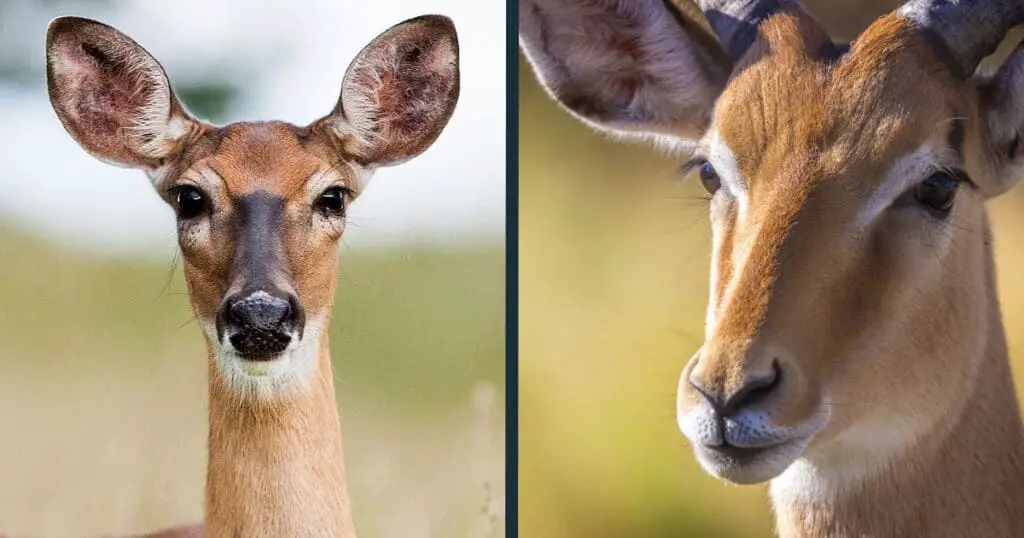For many of us, deer and antelope are pretty much the same animals. Since they’re so often confused, many people assume that antelope are a type of deer. After all, they seem to have similar features and behavior. But when it comes to deer vs antelope, they do differ in pretty amazing ways.
Both deer and antelopes are herbivores that come from the family order called Artiodactyla. In this article, we’ll explain how each is unique and offer tips on how to tell these two creatures apart.
Quick Summary of Differences Between Antelope and Deer
Table of Contents
ToggleHere is a table that gives an overview of some of the differences when comparing deer vs antelope.
We will share more details and go in-depth about the differences between these two animals below.
| Description | Deer | Antelope |
| Family | Cervidae | Bovidae |
| Growth on Frontal Skull | Antlers that shed and grow annually. Mostly found primarily in males – except for 1 species of deer where the female also grows antlers. Branch out | Permanent horns. Males of all species and two-thirds of the species females also grow horns. Horns do not branch out but can have distinct shapes, from being pointy and straight to large scimitar-shaped, depending on the species |
| Commonly Found Locations | Widespread except in Australia and Antarctica | Native to Asia and Africa |
| Size | Size ranges depending on species are between 10 to 800 kg | Size ranges from 40 to 60 kg |
| Life Span | 10 to 20 years | 10 to 25 years |
| Diversity | 55 species | 91 species |
| Top Speed | 35mph for short distances | 53mph for short distances, and 27mph for long distances |
| Examples | Whitetail deer, mule deer, elk, moose, chital, etc | Gazelle, oryx, markhor, waterbuck, impala, etc. |
Deer vs Antelope: Similarities
Let’s begin by noting a few of the many similarities between Antelope and Deer.
Distant Relatives
Artiodactyla are cloven-hoofed mammals and many large land animals belong to this order. Members of this family include cattle, deer, antelope, giraffes, pigs, and even camels. These animals’ diets also consist of plant-based substances. They are primarily herbivores, though they do scavenge occasionally.
While both deer and antelope are a part of this family tree, their lineages branch out further.
Male and Female Names
Males and females of both deer and antelope are called “bucks” and “does” respectively.
However, they aren’t limited to these words. With deer, the word “stag” can refer to bucks, and “hind” can be used to refer to does. In both species, “fawn” is used to refer to their young.
Females of both antelopes and deer are generally smaller in size compared to their male counterparts, as well.
Diets
Antelopes and deer both eat mainly plant-based diets.
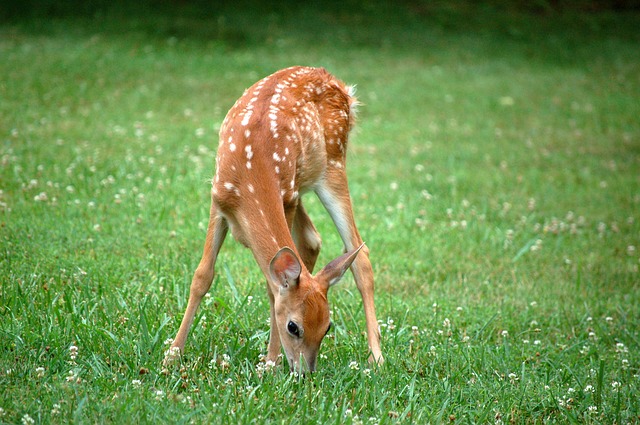
Deer eat nuts, fruits, wild soybeans, corn, buds, and bark depending on the time of the year and availability of food. Meanwhile, antelope eat grass, tree shoots, fallen leaves, and juicy plants.
Both antelope and deer are ruminants, which means that they chew on food that has been fermenting in one of their stomachs. They regurgitate the food and chew on it again. This is part of the digestive process for Artiodactyla and helps facilitate digestion in their bodies. They depend on microbes that form during this fermentation process.
Fast Runners
Amongst the Artiodactyla, deer and antelopes have developed incredibly quick running abilities. Both species are known for their fast speeds.
However, antelopes have had to become much faster due to their habitat areas. After all, antelope are animals of prey and have to outrun animals like the cheetah. Antelope are known to run as fast as 27 miles per hour, and keep that speed for long distances. They can reach a top speed of more than 50 miles an hour.
Deer on the other hand can reach a top speed of 35 miles per hour. They cannot maintain that speed for long periods.
Deer vs Antelope: What Are the Differences?
Now let’s take a look at some of the differences between Antelope and Deer.
Horns: The most prominent difference
The growth on their skulls is the easiest way to distinguish deer vs antelopes. Do they have Antlers or Horns?
You simply need to know the difference between the two to tell the two animals apart.
Deer Antlers
Deer will grow and shed antlers annually. Their antler appearance changes as they grow, though the antlers always branch out, creating intricate designs. Antlers are also unique to every year they grow and often get bigger each year.
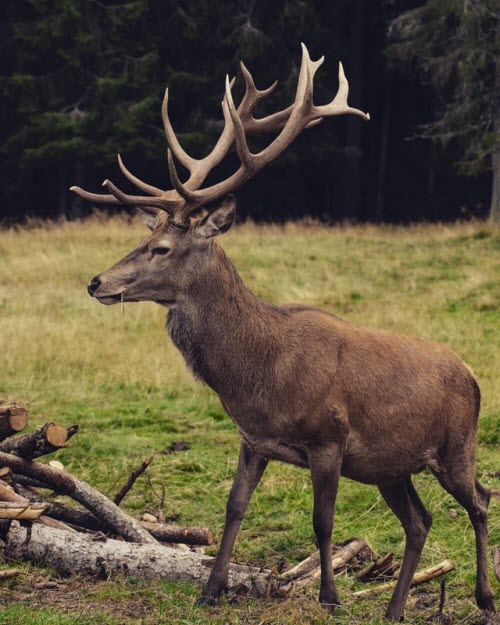
There is a hairy fuzz covering the antlers and they are bulbous while they are growing. Towards the winters, the deer shed the velvet on their antlers and they begin to harden and you can recognize them as the bony crown of this creature.
Antlers are mostly found in male deer. Sometimes, female deer can grow antlers, though it is a rare occurrence and only happens when there is a testosterone imbalance. However, caribou (or reindeer) are the only species in the deer family whose females will grow antlers.
Antelope Horns
Antelopes grow horns and they develop into a single form. Different antelope species will grow horns of different shapes.
For example, some antelopes will have horns that are straight and pointy. The markhor, for instance, has long corkscrew-shaped horns. On the other hand, wild goats will have large scimitar-shaped horns.
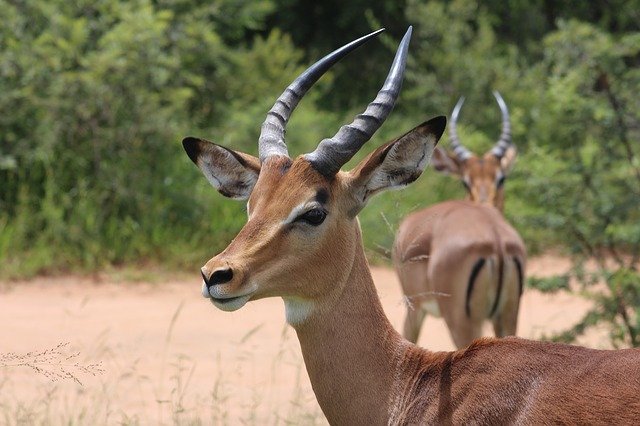
The key difference between the horns of deer vs antelope is that antelope horns do not branch out and will never shed. Once broken or fallen off, their horn is gone for good.
For antelopes, all males of the species will grow horns. Additionally, two-thirds of the species also have females growing horns as well, unlike deer.
Subcategories of a Species
Deer and antelope may both belong to the Artiodactyla, but that is a large grouping. They branch out into distinct categories.
Deer belong to the Cervidae family, which includes caribou and moose. Antelopes belong to the Bovidae family and are more closely related to bison, sheep, goats, and cattle.
Locations
Deer are one of the most wide-reaching species and different types of deer can be found almost everywhere except for Antarctica.
Antelopes can be found primarily in Asia and Africa. They are highly adaptive to many areas. You can find antelope species thriving in different landscapes.
Comparing the Size & Lifespan of Antelope and Deer
Deer can vary in size depending on their species. While some are considered slender and lightweight, there are other deer-folk, like the moose, that can be large and heavy.
The average weight across the species can range from 10kgs to 800kgs. Their lifespan is typically between 10 to 20 years. They reach maturity some time around 6 years old.
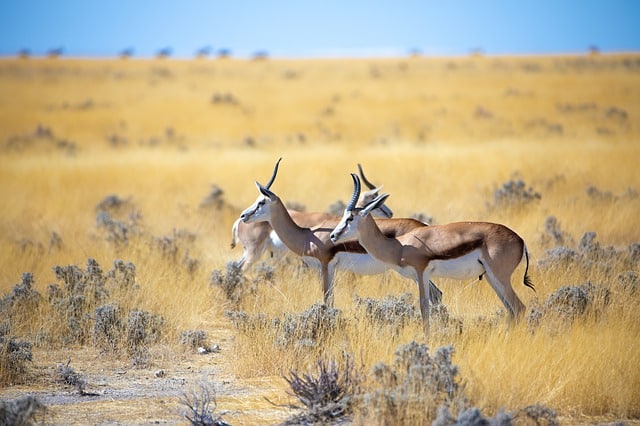
Antelope on the other hand are slender, weighing between 40kgs to 60kgs. They live slightly longer than deer on average, though not significantly longer. Their lifespan is around 10 to 25 years.
Deer and antelope may well be from the same category of a large family of land animals. However, despite having that similarity, they are vastly different species altogether. They’re distant cousins, at best.
Be on the lookout for the horns and antlers to tell the difference immediately. While they vary in size and subspecies, their horns are the most telling sign to help you differentiate them.

